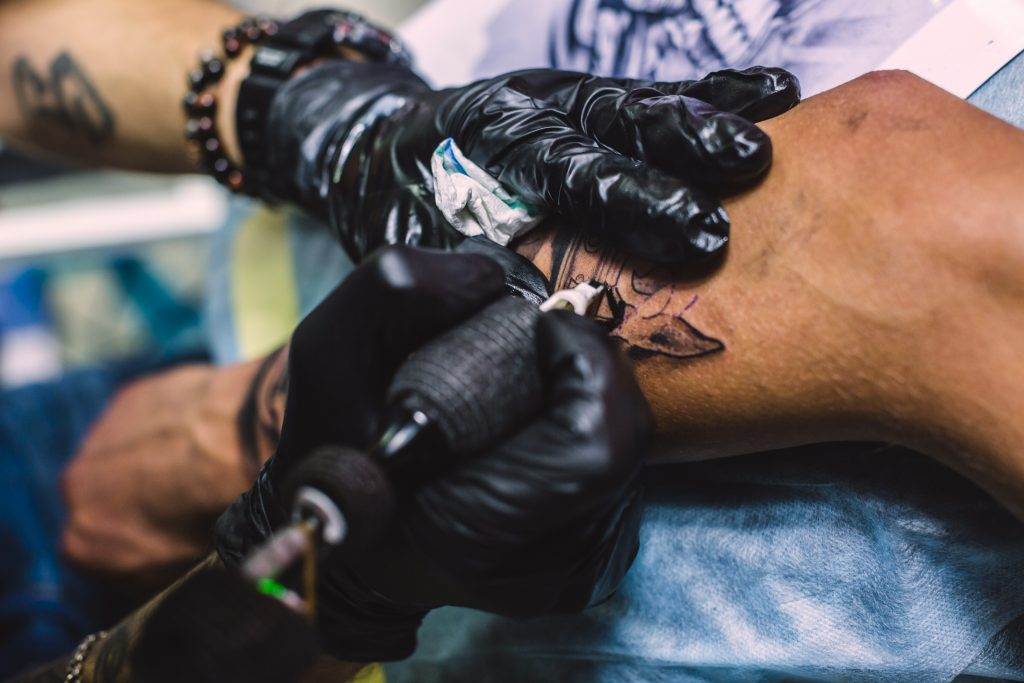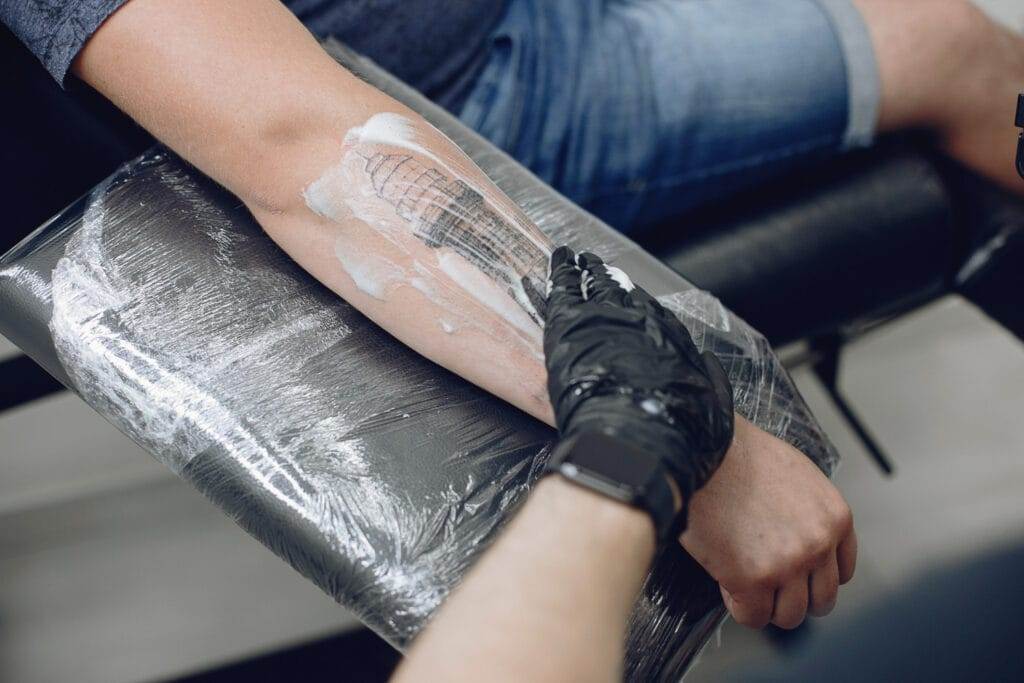Tattoos have become a popular form of self-expression, allowing individuals to showcase their unique personalities and beliefs. Whether it’s a small symbol or a full sleeve, tattoos hold a special meaning for those who choose to adorn their bodies with them. However, over time, tattoos can fade, blur, or lose their vibrancy. This is where touch-ups come in. Touch-ups are necessary to maintain the beauty and longevity of tattoos, ensuring that they continue to look as stunning as the day they were first inked.
Understanding the Tattoo Healing Process
When you get a tattoo, it’s important to understand the healing process that your body goes through. The healing process consists of several stages, including the initial healing stage, the peeling stage, and the final settling stage. During the initial healing stage, your tattoo will be red, swollen, and tender. It’s crucial to follow proper aftercare instructions during this time to prevent infection and promote healing.
The peeling stage is when your tattoo will start to flake and peel, similar to a sunburn. It’s important not to pick or scratch at your tattoo during this stage, as it can lead to scarring or color loss. Finally, during the settling stage, your tattoo will start to look more settled and vibrant as your skin fully heals.
Signs That Your Tattoo Needs a Touch-Up
There are several signs that indicate your tattoo may need a touch-up. One common sign is fading. Over time, exposure to sunlight and other environmental factors can cause tattoos to fade. If you notice that your tattoo has lost its vibrancy and looks duller than before, it may be time for a touch-up.
Another sign that your tattoo needs a touch-up is blurring or spreading of the lines. Sometimes, as your skin ages or changes shape, the lines of your tattoo can become less defined. A touch-up can help sharpen the lines and restore the original design.
Uneven lines are also a common issue that may require a touch-up. If you notice that some parts of your tattoo have thicker or thinner lines than others, a touch-up can help create a more balanced and cohesive look.
How Often Should You Get a Touch-Up?
The frequency of touch-ups depends on several factors, including the location of the tattoo and the quality of the ink used. Tattoos on areas that are exposed to the sun more often, such as the arms or legs, may fade faster and require touch-ups more frequently. Additionally, if you have a tattoo that was done with low-quality ink, it may fade or blur more quickly, necessitating more frequent touch-ups.
As a general guideline, it’s recommended to get a touch-up every 2-5 years to maintain the beauty and vibrancy of your tattoo. However, it’s important to listen to your body and pay attention to any signs that your tattoo may need a touch-up sooner.
Preparing for Your Touch-Up Appointment

Before your touch-up appointment, there are several things you can do to ensure the best possible outcome. First and foremost, avoid sun exposure in the weeks leading up to your appointment. Sunburned or tanned skin can be more sensitive and may not hold the ink as well.
Staying hydrated is also important, as it helps keep your skin healthy and promotes proper healing. Make sure to drink plenty of water in the days leading up to your appointment.
Lastly, follow any specific instructions given by your tattoo artist. They may recommend avoiding certain medications or skincare products that can interfere with the healing process. By following these guidelines, you can help ensure that your touch-up session goes smoothly.
What to Expect During a Touch-Up Session
During a touch-up session, you can expect a similar process to when you first got your tattoo. The artist will clean the area and prepare the equipment. They may also apply a numbing cream or spray to help manage any discomfort.
The touch-up itself involves going over the areas that need improvement, such as faded or blurred lines. The artist will carefully fill in the color or sharpen the lines to restore the tattoo’s original beauty. Depending on the size and complexity of the tattoo, the touch-up session can take anywhere from 30 minutes to a few hours.
It’s important to note that touch-ups can be more uncomfortable than getting a new tattoo, as the skin in the area may be more sensitive. However, your artist will do their best to minimize any discomfort, and you can communicate with them if you need breaks or adjustments during the session.
Aftercare Tips for Touch-Ups
After getting a touch-up, it’s crucial to follow proper aftercare instructions to ensure proper healing and maintain the results of the touch-up. Your artist will provide specific guidelines for your tattoo, but here are some general aftercare tips:
– Keep the area clean: Gently wash the tattoo with mild soap and water twice a day to remove any dirt or bacteria.
– Avoid swimming: Avoid swimming in pools, hot tubs, or natural bodies of water until your tattoo is fully healed to prevent infection.
– Moisturize regularly: Apply a thin layer of fragrance-free lotion or tattoo aftercare cream to keep the area moisturized and prevent dryness or itching.
– Avoid sun exposure: Protect your tattoo from direct sunlight by wearing loose clothing or applying sunscreen with a high SPF.
By following these aftercare tips, you can help ensure that your touch-up heals properly and maintains its beauty for years to come.
Common Touch-Up Techniques for Different Types of Tattoos
Different types of tattoos may require specific touch-up techniques to address their unique issues. For example, if you have a tattoo with shading, the touch-up may involve adding more depth and dimension to the shading to restore its original look.
Color correction is another common touch-up technique. Over time, tattoos can fade or change color, resulting in a less vibrant appearance. A touch-up can help correct any color discrepancies and bring back the original vibrancy of the tattoo.
Additionally, touch-ups may involve fixing any areas where the ink has spread or bled. This can happen if the original tattoo was not done with precision or if the ink has migrated over time. A skilled artist can carefully correct these issues and create a more defined and crisp look.
Touch-Ups for Faded or Discolored Tattoos
One of the most common reasons people seek touch-ups is to fix tattoos that have faded or become discolored over time. Sun exposure, aging, and other environmental factors can cause tattoos to lose their vibrancy and appear duller than before.
Touch-ups can help restore the original color and vibrancy of a tattoo, making it look fresh and new again. By carefully adding more ink to the faded areas, an experienced artist can bring back the life and beauty of your tattoo.
Before-and-after photos are often used to showcase the effectiveness of touch-ups for faded or discolored tattoos. These photos demonstrate the transformative power of touch-ups and can serve as inspiration for those considering getting a touch-up for their own tattoo.

Maintaining Your Tattoo’s Beauty with Expert Touch-Ups
In conclusion, touch-ups are an essential part of maintaining the beauty and longevity of tattoos. Over time, tattoos can fade, blur, or lose their vibrancy, but touch-ups can help fix these issues and restore the original look of the tattoo.
Finding the right tattoo artist for touch-ups is crucial, as it requires a different set of skills compared to creating a new tattoo. By choosing an experienced and skilled artist, you can ensure that your touch-up session goes smoothly and that the results are stunning.
Remember to follow proper aftercare instructions after getting a touch-up to promote proper healing and maintain the results. By taking care of your tattoo and getting regular touch-ups, you can enjoy its beauty for years to come.



